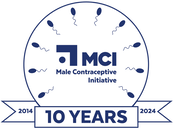|
Dr. Sab Ventura obtained his PhD in Pharmacology from Monash University (Melbourne, Australia) in 1992 and has held research positions at the Royal Melbourne Hospital, University of Melbourne, University College London (UK), and Monash University. He was appointed as a Senior Lecturer (Teaching & Research) at Monash University in 2004 and maintains this position in the Drug Discovery Biology Theme of the Monash Institute of Pharmaceutical Sciences at Monash University’s Parkville Campus. Dr. Ventura teaches undergraduate Pharmacy and Pharmaceutical Science students and is the Head of the Male Reproductive Pharmacology Research Lab. He has co-authored 79 peer reviewed publications and his research investigates the physiology and pharmacology of male reproductive organs with a view to identifying novel therapeutic targets for male contraception. What is your connection to contraception?Research during my PhD studies in the mid 1990s identified the autonomic mechanisms by which sperm is transported from its storage site in the cauda epididymis to the base of the urethra prior to ejaculation. I have always thought that if this sperm transport could be inhibited then when ejaculation occurred, no sperm would be present in the ejaculate. This would produce male contraception through a non-hormonal mechanism. However, it was only recently that we were able to validate this hypothesis through our genetically modified double knockout mouse model. How has the sector changed from the time you began working in it to date?There have always been research groups around the world trying to develop male contraceptives, but it seems to have gained more momentum with the media and general public. Nevertheless, it remains a poorly funded area of medical research with funding bodies and the pharmaceutical industry. The willingness of men to accept a male contraceptive has also increased in the younger generation. What do you think are the biggest challenges affecting contraception, generally, and male contraception, specifically?The biggest challenge facing family planning is the lack of a safe, effective, and convenient male contraceptive, and this means that ~50% of the population do not have a viable option for contraception. In terms of male contraception, the biggest challenges are: overcoming the hormonal side effects that are often intolerable; stopping the 1,000 sperm per second that are made and the 100 million or so sperm in an ejaculate compared to just one egg per month in women; making the process readily reversible; not affecting the development of sperm so that future offspring are unaffected; making a chemical that can cross the blood-testis barrier; making the contraceptive as convenient and non-invasive to use as possible; and various social and cultural issues. Have these challenges and opportunities evolved over time? If so, how?The social issues appear to have evolved the most over recent times. These days, men seem to be much more willing than before to use contraception and take responsibility for family planning. This is evident from numerous social science publications on this topic. Similarly, the social science literature also shows that women are much more willing than before to trust their partners in taking a role in family planning and contraception. What are your hopes for the near and far future of male contraception?I hope that in the near future, many new non-hormonal strategies for male contraception are researched in the pre-clinical setting. In the not too distant future, I hope that a safe, effective, readily reversible and convenient to administer male contraceptive makes it to market. This will allow the general population to decide whether there is indeed a viable market for such a product. A positive outlook towards freely available male contraception may then lead to further male contraceptives being released so that one day maybe even men will have a choice between various options for male contraception. What will it take for these to become reality?Money: the more money that becomes available to support research into male contraceptives, the faster this research will progress. It will certainly happen one day, it’s just a matter of when. For instance, at the moment my research project has funding to support one full time researcher and a couple of graduate research students. However, if a pharmaceutical company were serious about developing a male contraceptive they might have 50 people working on the project. Are there barriers to prevent these from coming to fruition?Other barriers include the previously mentioned challenges of funding and medical barriers, a chief barrier is the reluctance of older generations to accept that male contraception is indeed a viable option for family planning. Please share any anecdotes from your experiences working in the sector.Despite the lack of support from funding bodies and pharmaceutical companies, male contraception remains incredibly popular with the media and general public. So much so, that in my time as a medical researcher, I have experienced two days where I have had almost rockstar status, well for a day at least. The first was following publication of our breakthrough paper in Proceedings of the National Academy of Sciences of the United States of America (PNAS) that validated our non hormonal strategy for male contraception and the second was five years later when we received significant funding from MCI to continue our work. On both occasions, our story was front page news in Australia’s biggest selling newspapers, with feature stories on national TV news as well as countless radio interviews. In addition, we were featured in and interviewed by numerous international press organizations. Both days basically consisted of back-to-back radio and TV interviews beginning with early morning breakfast radio and TV shows through daytime Please share any additional comments or considerations that you feel would be beneficial to the general public with respect to male contraception and your work.We believe we have a validated therapeutic target for a non-hormonal male contraceptive that is likely to be readily reversible, free from intolerable side effects, and likely to be orally administered. All that is required is for us to develop the pharmacological tools that will allow us to test that we can block our therapeutic target with chemicals to produce the same male contraception that we were able to achieve with genetic deletion of the target proteins.
0 Comments
Your comment will be posted after it is approved.
Leave a Reply. |
Categories
All
Archives
June 2024
|
|
|
Donate to Male Contraceptive InitiativeYour generous donation makes a difference!
|
© Male Contraceptive Initiative. All rights reserved.


 RSS Feed
RSS Feed
